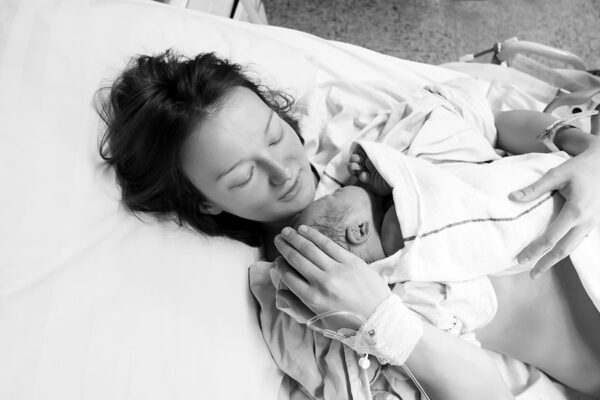What does a successful birth look like?
If you’ve had a baby, or are going to have one, then it’s likely you’ve had it defined to you as ‘healthy mother, healthy baby’. That is, one where both the mother and the baby come out the other side alive.
This approach acknowledges two truths about birth that, at first glance, seem at odds:
- Birth is a natural process that women’s bodies are designed to do.
- The process of birth presents risks for both the mother and baby.
For obvious reasons, medical practitioners tend to be a risk-averse population. And obstetricians, even more so again. Thus, it becomes very easy to put the blinkers on when delivering a baby and make decisions that prioritise ‘healthy mum, healthy baby’, above all else.
The problem with this, as noted in the British Medical Journal, is:
At the extreme, a lack of understanding of the psychology of childbirth can contribute to a traumatising birth, which can be devastating to women even when the immediate outcome is a physically healthy mother and newborn.
In other words, when we prioritise physiological health and ignore psychological health and the experience of the mother at birth, there is a lasting impact to the mother than cannot be ignored.
Here’s what the World Health Organisation (WHO) has to say on the matter:
The growing knowledge on how to initiate, accelerate, terminate, regulate, or monitor the physiological process of labour and childbirth has led to an increasing medicalization of the process. It is now being understood that this approach may undermine a woman’s own capability in giving birth and could negatively impact her experience of what should normally be a positive, life-changing experience.
In the first six months of my time at Western Obstetrics, I spent a long time talking to patients about their previous experience of childbirth along with what their expectations were for their upcoming birth. And the following became clear:
- The psychological impact of childbirth is significant and in many cases of postnatal depression, the triggering effect was a negative birth experience
- A birth can be perceived as being traumatic, even if the physical outcome for the mother and the newborn is a positive one
- The key causes of a negative birth experience were:
- A lack of trust in the caregivers, (which often originated from inconsistent advice)
- Interventions that were not explained and occurred when there was no clear reason to intervene
- A sense that the patient’s views were not ‘listened to’
The lifelong effect of a negative birth experience is profound. Not only does it increase the risk of mental health issues in the immediate postnatal period, (including increased risk of both postnatal depression and anxiety), it also has an effect on the long-term relationships of the mother.
- A traumatic birth experience can affect the initial attachment with their newborn baby, increasing the risk of mental health issues and development of the child.
- It can also affect their relationship with their partner (as the experience of childbirth plays a major role in the mother’s self-esteem, positive feelings for the baby and how well they adjust to the motherhood role).
So, how do we improve the birth experience for mothers while also ensuring the very best clinical outcome? The following steps are important:
- Ensure the care we provide is patient-centred and individualised. Each patient needs to be provided with education and support throughout their pregnancy.
- Once in labour, it is important to recognise that every labour is unique and that our management needs to be adapted to the individual patient’s needs.
- When medical intervention is indicated, the reasons for the intervention should be explained and the patient should be actively involved in the decision-making process – they should never feel that things have been done to them.
- Continuity of care is essential. The importance of establishing a ‘trust’ relationship with providers is essential for ensuring a positive birth experience.
- A sense of ‘empowerment’ should be developed. This involves education and involvement in the decision-making process (including birth planning). It is so important to understand what the patient wants and to work with them to achieve their expectations. If expectations are unrealistic, it is important to work on establishing appropriate and achievable expectations.
- If interventions are required, including the provision of pain relief, they should occur in a timely manner. It is important that the pain relief options are explained to the patient and they should be provided with the opportunity to manage their pain by positioning and mobilisation early in labour.
The most important step, however, in improving patient birth experience is to acknowledge that birth experience is important. By creating positive birth experiences for our patients, we are setting a platform for them to thrive not only in the immediate postnatal period but for the rest of their lives.

